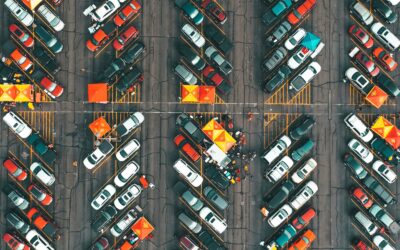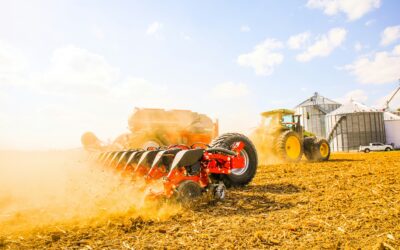Lane closures, shifting traffic patterns, and sudden merges make Georgia’s road construction areas a hotspot for serious crashes. Whether you were rear-ended in a backup, sideswiped at a lane drop, or hit after a confusing detour, a work-zone wreck can derail your week and your finances fast. Knowing how Georgia fault rules apply—and what evidence to capture before the scene changes—can protect your health and your personal injury claim.
Construction zones amplify risk because normal road cues are disrupted. Temporary barrels narrow lanes, uneven pavement reduces traction, and drivers are forced to merge in short distances—often at highway speeds. Add glare at sunrise or sunset, wet paint or gravel, and drivers who look down at GPS during a detour, and collisions multiply. Common work-zone crashes include rear-ends in stop-and-go traffic, lane-change sideswipes, wrong-way entries into coned-off areas, and pedestrian strikes involving flaggers or workers.
Georgia is a fault state. Every driver still owes a duty to operate safely for conditions in a construction area—slowing down, increasing following distance, obeying temporary signs, and staying off the phone. When a motorist blows past a “Merge Now” sign, tailgates into a chain-reaction crash, or darts from a closed lane at the last second, they can be liable for resulting injuries. In some cases, road contractors may share responsibility when traffic control devices are missing, confusing, or placed incorrectly, or when temporary surfaces and transitions are left dangerously uneven without warnings. Sorting out who is responsible—and which insurer pays—requires quick investigation.
If a work-zone collision happens, your first priorities are safety and documentation. Crews will tidy barrel placements, tow vehicles, and restart work quickly. Evidence disappears fast.
What to do after a construction-zone crash
- Call 911 and request medical evaluation. Concussion and neck/back symptoms often appear hours later; early records tie injuries to the crash.
- Photograph the traffic control setup. Capture lane-drop signs, arrow boards, cones/barrels, taper lengths, rumble strips, “Road Work Ahead” signs, and any missing or fallen devices. Take wide and close shots from your approach path.
- Document the roadway surface. Photograph uneven pavement transitions, loose gravel, slick paint, puddles around drains, or debris from milling operations.
- Record traffic conditions. Note speed of flow, brake lights ahead, and any queueing beyond a blind curve or hill; video can show how quickly traffic stacked up.
- Collect information and witnesses. Exchange insurance details and get names for other drivers, passengers, flaggers, and nearby workers who saw unsafe merging, speeding, or device problems.
- Preserve electronic evidence. Save dash-cam files; ask adjacent businesses or project offices to preserve exterior camera footage.
- Get the police report number. Ask officers to identify it as a work-zone crash and note relevant conditions (lane closures, signage, speeds).
- Avoid recorded statements and quick offers. Provide basics to insurers but don’t speculate about fault or speed until you’ve spoken with an attorney.
- Follow treatment plans. Keep all appointments and receipts; consistent care strengthens a Georgia injury claim.
Common injuries and damages after work-zone wrecks
Stop-and-go rear-ends and sideswipes cause whiplash and herniated discs, concussions and post-concussive symptoms (headache, light sensitivity, brain fog), shoulder and knee injuries from bracing, fractures, and anxiety around high-speed merges. A Georgia claim can recover ER and follow-up care, imaging and therapy, future medical treatment, lost wages or reduced earning capacity, pain and suffering, and vehicle repair or total loss. You may also be reimbursed for necessary replacements—child car seats, prescription glasses, laptops, or phones damaged in the wreck. In reckless cases—speeding through the closure, phone use in a marked work zone—punitive damages may be available to deter similar conduct.
Who may be liable besides the other driver
- Road contractors and traffic-control vendors when improper device placement, missing warnings, unsafe taper lengths, or hazardous surface transitions contribute to a crash.
- Commercial carriers whose drivers ignore reduced speed limits or drive on bald tires, worn brakes, or with overweight loads that cannot stop in time.
- Third-party maintenance crews for spilled materials, unsecured loads, or equipment intruding into open lanes without proper flagging.
Claims involving public entities or prime contractors can be complex and time-sensitive; notice rules and contractual relationships matter. The key is fast documentation of how the zone actually looked and functioned when you approached it—not how it looked an hour later.
Insurance coverage that may apply
The at-fault driver’s liability policy is primary. Your medical payments (MedPay) coverage can help with immediate bills regardless of fault. Uninsured/underinsured motorist (UM/UIM) coverage may fill gaps if the at-fault driver has minimal insurance or flees. In commercial or contractor cases, additional policies may stack, increasing total recovery if liability is proven.
Prevention tips for active work zones
- Merge early and leave at least a three-second following gap—more at highway speed.
- Expect stopped traffic just past a curve or hill; cover the brake and scan far ahead.
- Treat arrow boards and taper barrels as non-negotiable; never “ride the closure” to jump the line.
- Use headlights in rain or dusk and avoid lane changes on fresh paint or milled surfaces.
- Put the phone away—detours and narrow lanes demand full attention.
How Gunn Law Group proves work-zone negligence
We move quickly to gather what disappears first: photos and video of the temporary traffic control, body-cam and 911 audio, dash-cam/CCTV footage, and event-data recorder downloads showing speed and braking. We request project plans and daily logs, identify which contractor controlled signage and lane closures, and work with experts to evaluate whether the zone complied with safety standards. Then we coordinate with your medical providers to build a clear, chronological damages story, identify every available policy—personal, commercial, and, when applicable, UM/UIM—and negotiate with each insurer to pursue the maximum compensation Georgia law allows.
If a construction-zone collision turned your commute into chaos, don’t let an insurer blame “confusing barrels” and walk away. Need a home run? Call the Big Gunn at 888-BIG-GUNN for a free case review with an Atlanta personal injury lawyer who knows how to win work-zone crash claims.




